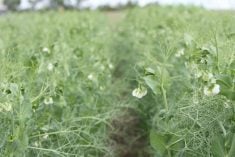Livestock markets are still suffering from too much meat of all types due to weak exports, overweight cattle and a United States hog herd moving into its liquidation phase.
But the fed cattle situation in Canada improved a little last week.
Average fed cattle prices increased slightly due to more light calves in the mix, which fetched prices $2-$3 per hundredweight more than yearlings.
Canfax said Alberta prices March 12 were steers $80.55-$87 per cwt. and heifers $80.75-$88.50.
Several packers have run at reduced capacity to force up beef prices, with some success. The Calgary wholesale price was up by $2 to $141-$152 per cwt. on handyweight cattle.
Read Also

Activist urges new way to measure profitability
Organic activist praises Mark Carney for spearheading the Task Force on Climate-related Financial Disclosures.
But Canfax believes last week’s improvement does not mean a rising market. U.S. fed cattle prices are expected to remain in the low $60s (U.S.) and improvement is not expected until after Easter.
In the feeder cattle market, prices were up a little last week, said Canfax. Lighter cattle for the grass market sold steady while heavier cattle were up more than two cents a pound.
The numbers on offer are falling and prices are expected to be steady to slightly stronger in coming weeks.
Hog market disturbed
Manitoba Agriculture said a snowstorm in the U.S. Midwest and Plains early last week disrupted hog marketings and reduced slaughter levels. This helped drive up hog prices by about $2 per 100 kilograms in Canada, but they slid back later in the week.
U.S. hog producers are being advised not to delay marketings because low prices are a result of the large hog supply, not poor demand for pork. Prices will not increase until hog feedlots are current with their markets.
U.S. hog marketings so far this year have been well above projections and part of the additional sales might be due to herd reduction or liquidation. The United States Department of Agriculture March 1 hog inventory report, due for release March 27, will indicate changes in the breeding herd, Manitoba Agriculture said.
It appears U.S. farrow-to-finish operations lost about $8-$10 (U.S.) per cwt. in January and February.
U.S. domestic pork consumption has not increased as much as expected and producers blame retail pork prices, which have not declined enough to encourage increased consumption. Seasonal Easter ham-buying is still slow.














